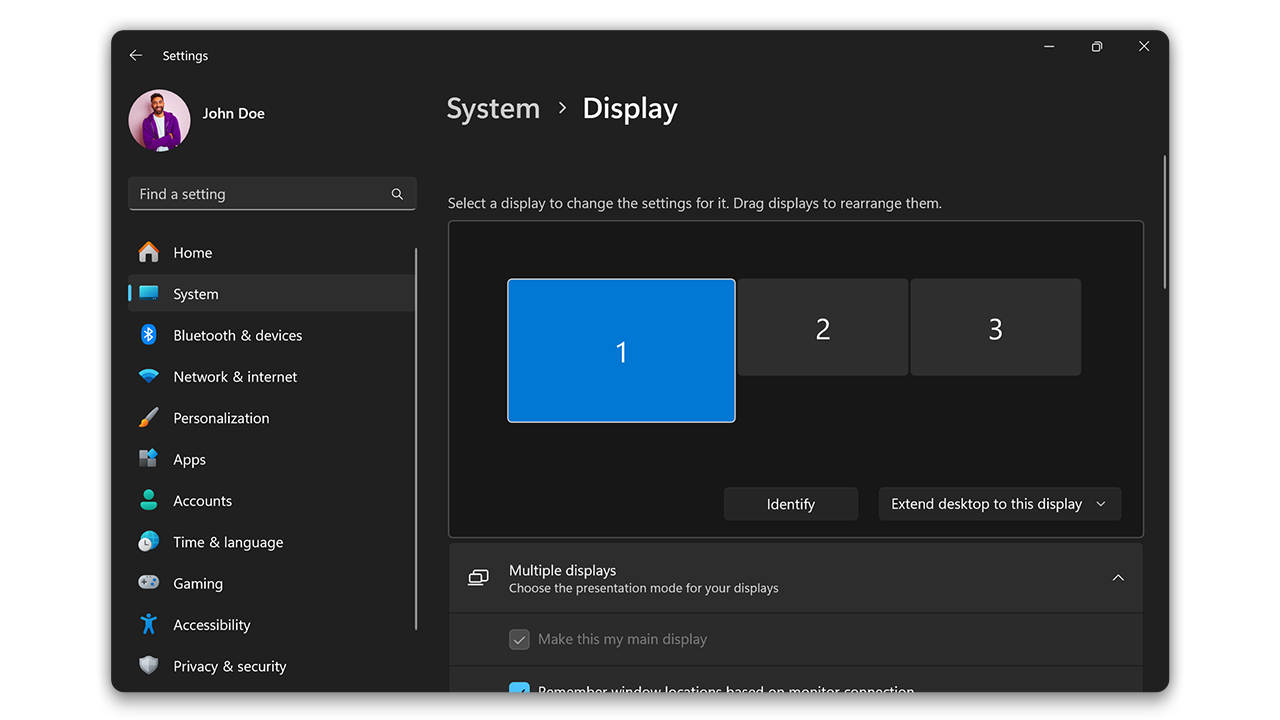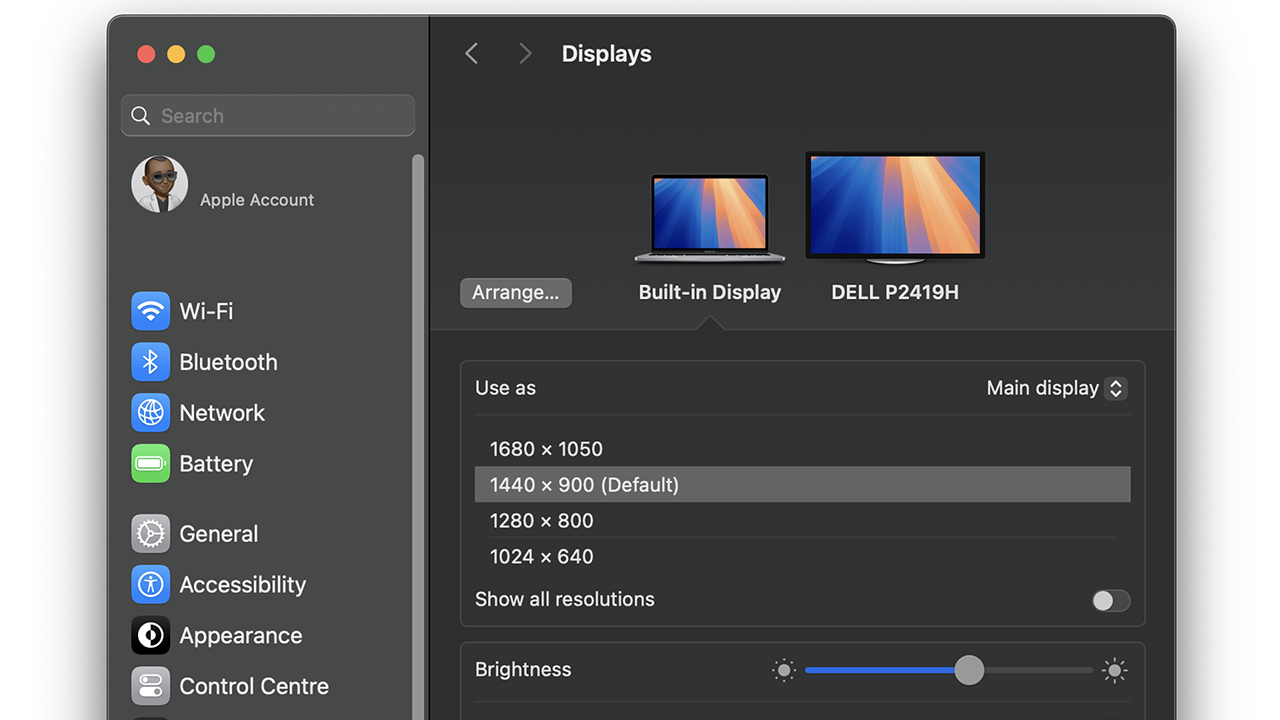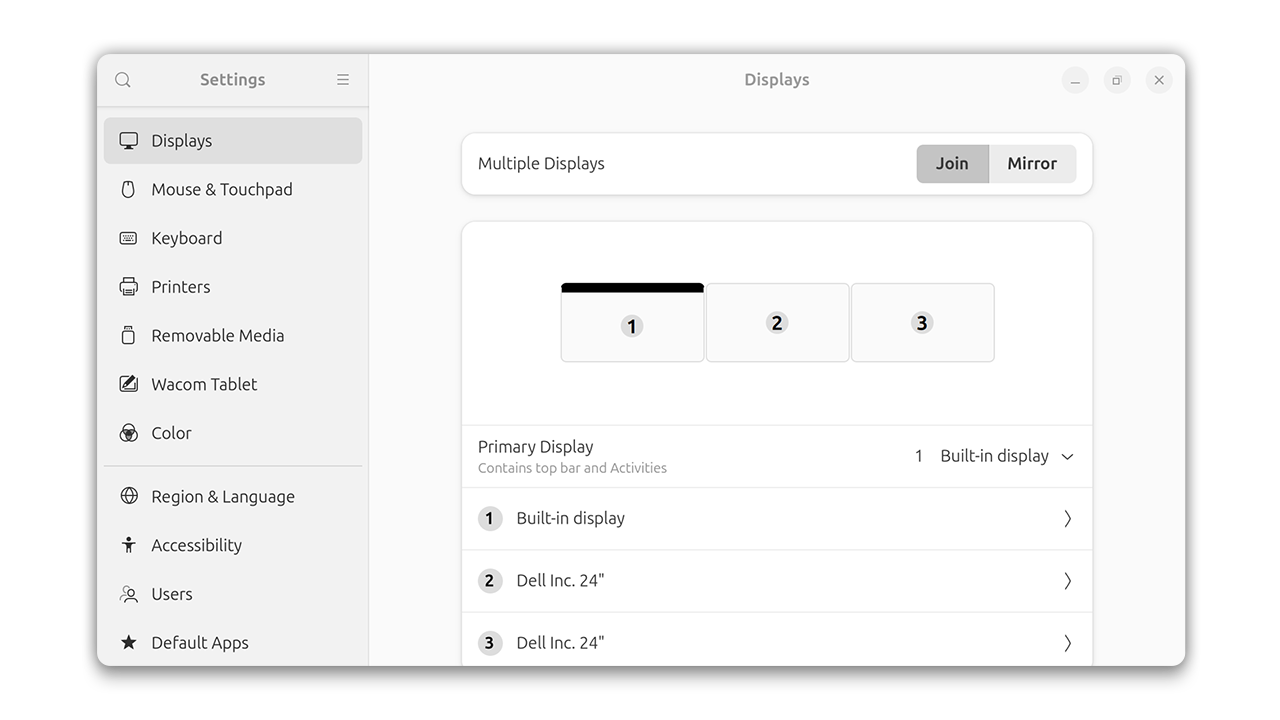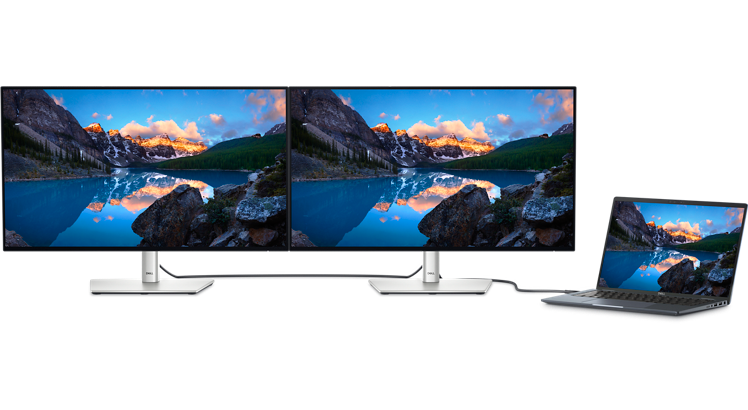How to Daisy Chain Monitors for a Multi-Display Setup
With DisplayPort, USB-C with DisplayPort alternate mode, or Thunderbolt daisy chaining, you can enjoy the flexibility of having multiple displays while keeping cables to a minimum. You can duplicate or extend the monitors dedicated to a different task or application.
There are three types of ports that allow you to daisy chain monitors - DisplayPort with Multi-Stream Transport (MST), USB-C with DisplayPort alternate mode, and Thunderbolt Multi-Stream Transport (MST).
NOTE: Daisy chaining is not supported over HDMI or with a USB-C port that does not support DisplayPort alternate mode or Thunderbolt (version 3 or higher).
Watch our video guide on monitor daisy chaining.
What do I need to daisy chain multiple Dell monitors?
- A PC with DisplayPort (version 1.2 or higher), USB-C with DisplayPort alternate mode, or Thunderbolt (version 3 or higher).
- Dell monitor with DisplayPort (version 1.2 or higher with Multi-Stream Transport), USB-C with DisplayPort alternate mode, or Thunderbolt (version 3 or higher).
NOTE: DisplayPort 1.2 MST is supported on select Dell monitors. See the user’s guide of your Dell monitor to check if your monitor supports DisplayPort (version 1.2 or higher with MST), USB-C with DisplayPort alternate mode, or Thunderbolt (version 3 or higher). - Install the latest video or graphics card (GPU) drivers on your computer.
How to set up multiple monitors using daisy chain?

Step 1 – Connect your primary monitor
- Connect your PC to the primary monitor (monitor 1). To maximize display quality, connect the monitor with the highest resolution first.
- NOTE: On some older Dell monitors, enable MST feature to set up the monitor in a daisy chain. The instructions to navigate the menu on your Dell monitor may vary. See the user’s guide of your Dell monitor for step-by-step instructions.
Step 2 – Add a second monitor
- Connect the primary monitor (monitor 1) to secondary monitor (monitor 2).
Step 3 – Add subsequent monitors
- Connect each subsequent monitor to the previous monitor.
- To daisy chain more than two monitors, see the factors that affect daisy chaining below.
Step 4 – Configure display settings
- After connecting your monitors, you may need to adjust your display settings. Go to your computer's display settings to arrange the monitors and choose whether to mirror or extend your desktop.
- In Windows, go to Start > Settings > System > Display.

- In macOS, go to Apple menu > System Settings > Displays (from the sidebar).

- In Ubuntu, go to Settings, and then select Display.

- In Windows, go to Start > Settings > System > Display.
- Drag and drop the monitors to arrange them in your preferred order. Choose whether to mirror (clone) or extend your desktop and adjust the screen resolution to your preference.
Display modes supported in Windows and macOS
| PC Output | Windows | Apple macOS |
|---|---|---|
| DisplayPort | Extended mode or duplicate mode | Duplicate mode only |
| USB-C with DisplayPort alternate mode | Extended mode or duplicate mode | Duplicate mode only |
| Thunderbolt | Extended mode or duplicate mode | Extended mode is supported exclusively with M1 Pro, M1 Max, M1 Ultra, M2 Pro, M2 Max, M2 Ultra, M3 Pro, or M3 Max. |
Daisy chain connection matrix
| PC Output | Monitor 1 Input | Monitor 1 Output | Monitor 2** Input |
|---|---|---|---|
| DisplayPort | DisplayPort In | DisplayPort Out | DisplayPort In |
| DisplayPort | DisplayPort In | Thunderbolt (downstream) | USB-C with DP alternate mode (upstream) or Thunderbolt (upstream) |
| USB-C with DP alternate mode | USB-C (upstream) or Thunderbolt (upstream) | DisplayPort Out | DisplayPort In |
| USB-C with DP alternate mode | USB-C (upstream) or Thunderbolt (upstream) | Thunderbolt (downstream) | USB-C with DP alternate mode (upstream) or Thunderbolt (upstream) |
| Thunderbolt | Thunderbolt (upstream) | DisplayPort Out | DisplayPort In |
| Thunderbolt | Thunderbolt (upstream) | Thunderbolt (downstream) | USB-C with DP alternate mode (upstream) or Thunderbolt (upstream) |
To use USB upstream for data communication between your PC and monitors, ensure that the connection between your PC and monitor is either USB-C with DisplayPort alternate mode or Thunderbolt. Or connect the USB device directly to the PC.
With macOS devices, the number of external displays that you can use at the same time depends on your Mac model, the resolution, and refresh rate of each display. See the Apple official website to learn more.
Factors that affect daisy chaining
The number of monitors that you can set up in the daisy chain and display quality depends on several factors.
Graphics card capability
- An integrated graphics card is suitable for typical office productivity applications, browsing, and basic games, image, and video applications.
- A discrete graphics card is required to handle more complex graphics, images, videos, applications, and gaming.
- The number of monitors you can daisy chain depends on whether you have an integrated or discrete graphics card.
Operating system capability
- macOS only allows monitor daisy chaining via Thunderbolt.
- The primary monitor must be connected to the MacBook using Thunderbolt and the primary monitor must have a Thunderbolt Out port.
- Thunderbolt active cable must be used.
Input and output ports on the PC and monitor
- Different output ports have different bandwidth and technical restrictions that affect the total number of monitors that can be daisy chained.
- The output port of the PC must match the input port of the monitor for optimal performance.
- Display Stream Compression (DSC) is a virtually lossless video compression algorithm that increases the number of monitors (and resolution) that can be daisy chained or connected via a docking station. See the documentation of the primary monitor for technical specifications of the input or outports to daisy chain.
Resolution and refresh rates
- Higher resolution or refresh rates require mode bandwidth which reduces the number of monitors that can be connected.
Color depth
- Color depth represents the maximum number of colors that can be displayed on the monitor. Higher depth color requires more bandwidth which limits the total number of monitors that can be daisy chained.
Display cables
- Ensure to use cables with correct specification that corresponds to the PC and monitor I/O ports. For example, when connecting a laptop with DP 1.4 (HBR3) port and monitor with DP 1.4, the video cable must be DP 1.4.
- Video cables shipped with the monitor typically corresponds to the same version as the monitor input and output ports.
Data or video prioritization
- Users can choose to either prioritize data speed on the USB ports or bandwidth for video signal to connect more monitors in the daisy chain at a higher resolution and/or refresh rate.
Troubleshooting Tips
If you encounter issues during the setup process, consider the following troubleshooting steps:
- Check Cable Connections: Ensure the display cables are securely connected.
- Update Graphics Drivers: Ensure your video or graphics card (GPU) drivers are up to date.
- Graphics Card Limitations: Verify that your graphics card can support the number of monitors you are connecting. See the factors that affect daisy chaining.
- Power Cycle: Restart your computer and monitors.
Frequently asked questions
Let us help you with some frequently asked questions on daisy chaining Dell monitors.
How many monitors can I daisy chain together?
- Display technologies such as DisplayPort, USB-C with DisplayPort alternate mode, or Thunderbolt, each support different video bandwidth. The number of monitors supported in the chain may vary with different types of connection.
- See the factors that affect daisy chaining above.
Do all Dell monitors support daisy chaining?
- No, only select Dell monitors support daisy chaining. Check your monitor’s specifications to confirm compatibility.
Can I mix different monitor brands in a daisy chain?
- It is recommended to use monitors from the same manufacturer for optimal compatibility and performance.
How do I configure the monitors in extended mode?
- Extended display mode requires that DisplayPort Multi-Stream Transport (MST) capabilities be enabled. By default, this feature is not enabled on Dell monitors. After you enable MST on your monitor, you can set your display to Extended Mode in Windows. Learn how to set up multiple monitors in Windows 11 and Windows 10.
Should all the monitors in the chain support DisplayPort 1.2 Multi-Stream Transport (MST)?
- No, only the primary monitor must support DisplayPort (version 1.2 or higher with Multi-Stream Transport). The subsequent monitors in the chain can do not need to support DisplayPort (version 1.2 or higher with Multi-Stream Transport).
Can I daisy chain two or more monitors with HDMI?
- No, daisy chain setup is not supported over HDMI.
- Daisy chain setup is supported over DisplayPort (version 1.2 or higher with Multi-Stream Transport), USB-C with DP alternate mode, or Thunderbolt (version 3 or higher).
Can I daisy chain two monitors with USB-C?
- Daisy chaining is not supported over USB-C alone. However, daisy chaining is supported if the USB-C port on your computer supports either DisplayPort (DP) Alternate Mode or Thunderbolt (version 3 or higher). See the user’s guide of your Dell monitor to learn which ports are compatible with what types of functions.
Why is my second monitor not displaying?
- Check the cable connections, ensure the second monitor is connected to the primary monitor securely. Ensure the primary monitor is with the highest resolution.
Can I daisy chain multiple monitors to my PC?
- Yes, you can connect multiple monitors to your PC using daisy chain.
- Ensure that your laptop has a DisplayPort (version 1.2 or higher), USB-C with DP alternate mode, or Thunderbolt (version 3 or higher) output port.
Can I connect a macOS devices to Dell monitors using daisy chain?
- macOS devices only support Extended Mode daisy chaining over Thunderbolt. macOS devices do not support daisy chain set up using HDMI.
- You can only connect a single external display to a Mac device with the M1 or M2 chips. For more information about connecting different models of Mac devices to external displays, go to the Apple website.
Will daisy chaining provide power to the monitors?
- No, DisplayPort cannot provide power. You must provide a separate power cable to each monitor.
Why is my daisy chain set up not working?
- Here are a few things that you must check first.
- Ensure your monitors support Multi-Stream Transport (MST). Older monitors do not always support MST, and your monitor may not be compatible with daisy chaining.
- Ensure you are using high-quality cables. Daisy chaining is only supported on DisplayPort (version 1.2 or higher with MST), USB-C with DP alternate mode, or Thunderbolt (version 3 or higher). HDMI does not support daisy chaining.
- Update the video or graphics drivers on your PC. Out-of-date or corrupt video drivers may cause display issues.
- Using too many monitors in the chain might cause display issues. Some PCs only support up to two or three monitors. If you are using your laptop screen and two monitors, connecting a third monitor in the series might put you over the limit. Disconnect one of the monitors or disable the laptop screen to get the third monitor working properly.
- See the section factors that affect daisy chaining.




